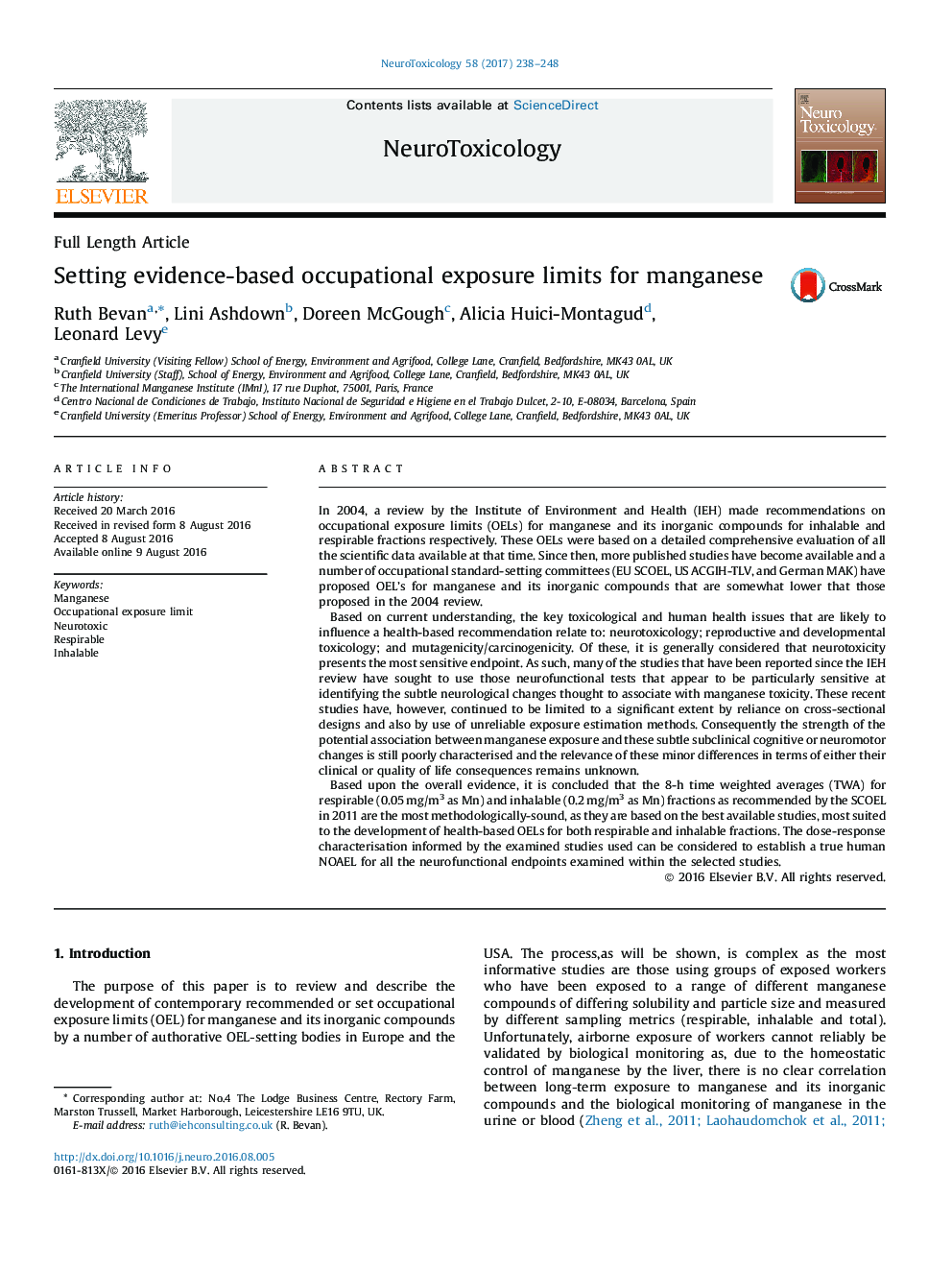| کد مقاله | کد نشریه | سال انتشار | مقاله انگلیسی | نسخه تمام متن |
|---|---|---|---|---|
| 5560886 | 1562036 | 2017 | 11 صفحه PDF | دانلود رایگان |
- OELs for Mn are based on subtle neurological changes as the key toxicity endpoint.
- These changes are limited in particular by unreliable exposure estimates.
- Clinical significance of subclinical cognitive or neuromotor changes is unknown.
- 8-h TWAs for respirable and inhalable fractions are recommended by the SCOEL.
- These are considered the most methodologically-sound of those currently proposed.
In 2004, a review by the Institute of Environment and Health (IEH) made recommendations on occupational exposure limits (OELs) for manganese and its inorganic compounds for inhalable and respirable fractions respectively. These OELs were based on a detailed comprehensive evaluation of all the scientific data available at that time. Since then, more published studies have become available and a number of occupational standard-setting committees (EU SCOEL, US ACGIH-TLV, and German MAK) have proposed OEL's for manganese and its inorganic compounds that are somewhat lower that those proposed in the 2004 review.Based on current understanding, the key toxicological and human health issues that are likely to influence a health-based recommendation relate to: neurotoxicology; reproductive and developmental toxicology; and mutagenicity/carcinogenicity. Of these, it is generally considered that neurotoxicity presents the most sensitive endpoint. As such, many of the studies that have been reported since the IEH review have sought to use those neurofunctional tests that appear to be particularly sensitive at identifying the subtle neurological changes thought to associate with manganese toxicity. These recent studies have, however, continued to be limited to a significant extent by reliance on cross-sectional designs and also by use of unreliable exposure estimation methods. Consequently the strength of the potential association between manganese exposure and these subtle subclinical cognitive or neuromotor changes is still poorly characterised and the relevance of these minor differences in terms of either their clinical or quality of life consequences remains unknown.Based upon the overall evidence, it is concluded that the 8-h time weighted averages (TWA) for respirable (0.05Â mg/m3 as Mn) and inhalable (0.2Â mg/m3 as Mn) fractions as recommended by the SCOEL in 2011 are the most methodologically-sound, as they are based on the best available studies, most suited to the development of health-based OELs for both respirable and inhalable fractions. The dose-response characterisation informed by the examined studies used can be considered to establish a true human NOAEL for all the neurofunctional endpoints examined within the selected studies.
Journal: NeuroToxicology - Volume 58, January 2017, Pages 238-248
